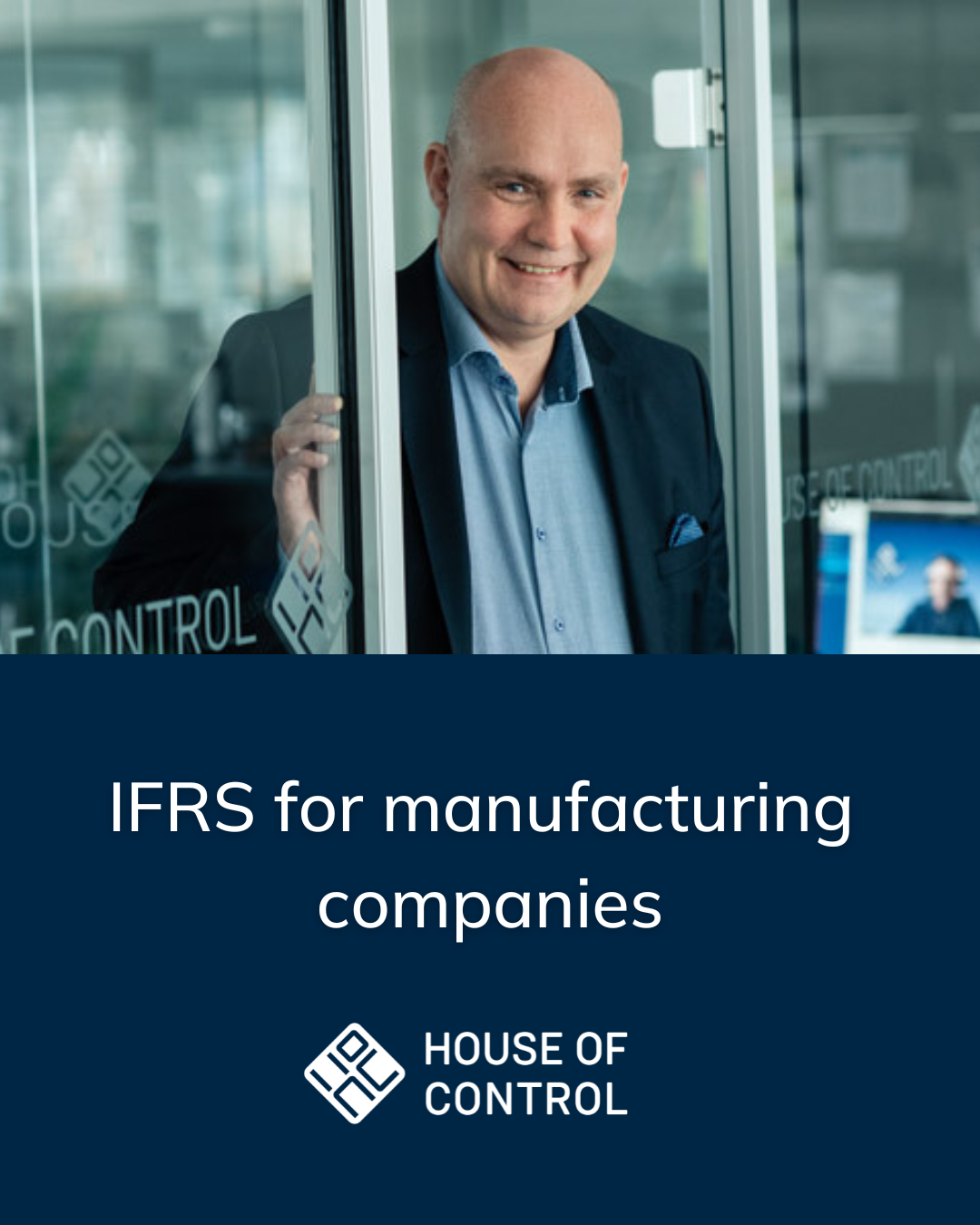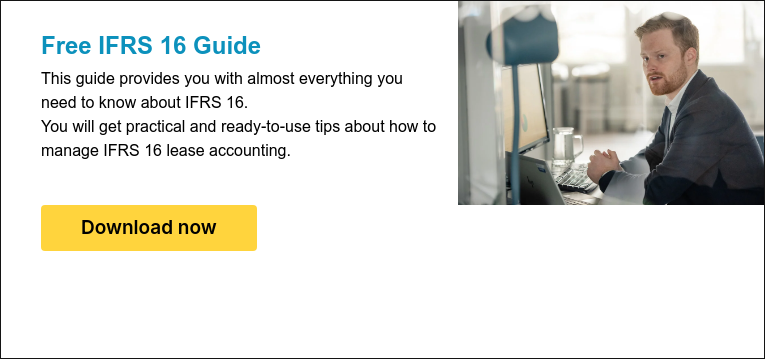IFRS 16 compliance is a significant financial reporting challenge for manufacturing companies. Distinct from other industries, challenges are primarily tied to equipment and production facilities. Here's what manufacturing finance teams should consider and how to address these unique IFRS 16 challenges.
Manufacturing finance professionals often grapple with several industry-specific challenges when it comes to IFRS 16 and lease accounting:
- Equipment lease complexities: Manufacturing heavily relies on leased machinery, equipment, and production facilities. The diverse range of equipment, each with its unique lease terms and conditions, can make lease management complex. Finance teams must accurately account for these leases under IFRS 16, which can be particularly challenging.
- Production cycle impact: Manufacturing often operates on extended production cycles, which can span months or even years. These lengthy periods affect lease calculations, including the determination of lease terms, discount rates, and variable lease payments.
- Global operations: Many manufacturing companies have a global presence, with lease contracts in multiple countries and currencies. Complying with IFRS 16 across different regulatory environments and managing currency fluctuations adds another layer of complexity.
- Maintenance and service agreements: Leases in manufacturing frequently include service and maintenance agreements that require careful separation between lease and non-lease components. Determining the appropriate allocation of costs is essential for accurate accounting.

Manufacturing-specific finance team challenges
The IFRS 16 and lease accounting challenges come in addition to a raft of other industry specific challenges that CFOs and finance teams in manufacturing companies face.
Manufacturing companies usually face global competition, though some still deliver their goods closer to their plants. In highly competitive companies, CFOs play a vital role in helping their companies optimize operations, reduce costs, and improve their products.
Cost management and control are thus relatively important in manufacturing. CFOs work to effectively manage multiple costs such as raw material, labor, and energy costs, which can be volatile and difficult to predict.
Cash flow management is also important to “manufacturing CFOs”. Factories usually involve large capital expenditures, even when a substantial part of the production equipment is leased. CFOs must find ways to manage these challenges while maintaining the necessary investments in their operations.
Effective supply chain management is critical in the manufacturing industry. Disruptions in production as well as transportation lead to higher costs and less profitability. Proactive CFOs work closely with supply chain teams to optimize supply chain economics.
Profitability in manufacturing companies is also impacted by technology adoption. The CFO needs to be aligned with operations on new technologies and their potential impact. This way, the CFO can determine when and how to adopt new technologies in order to improve operations, reduce costs, and increase competitiveness.
What IFRS 16 questions manufacturing companies need to consider
Should new equipment be acquired or leased? There are several factors to consider when determining which option is more cost-effective and aligns best with your overall business goals.
Upfront costs of purchasing equipment must be compared to the monthly lease payments. Consider the impact that the lease or purchase will have on the company's cash flow, operating expenses and overall financial situation. In an operations perspective, leasing is often more flexible. It lets the company switch to newer equipment as technology advances, while purchasing can lead to being stuck with outdated equipment.
The lease accounting standard IFRS 16 requires manufacturing companies to record their future lease payments as a liability in the balance sheet. This is to give the users of the financial statements a better understanding of the companies’ actual obligations. IFRS 16 specifies how to recognise, measure, present and disclose leases.
A lease is a contracted liability where the lessee (the company that leases a physical or intangible asset) gets control of the underlying asset for a certain period of time. A contract is, or contains, a lease if the contract conveys the right to control the use of an identified asset for a period in exchange for consideration.
The road to IFRS 16 compliance for manufacturing companies
IFRS 16 compliance in a manufacturing company involves a complex process. It can be time-consuming and professionally challenging. Here are six steps that need to be taken:
- Identify leases: Companies will need to review all of their existing contracts to determine which ones qualify as leases under IFRS 16. This includes not only traditional leases of property, plant, and equipment, but also leases of assets such as vehicles and equipment, as well as service and licensing agreements.
- Assess the lease term: For each lease, companies will need to determine the lease term, which is the period over which the company has the right to use the underlying asset. The lease term should include any options to extend or terminate the lease that are reasonably certain to be exercised.
- Determine the lease payments: For each lease, companies will need to determine the lease payments, which are the payments to be made by the company over the term of the lease. This includes any variable lease payments that depend on an index or a rate.
- Determine the discount rate: The discount rate is the rate used to calculate the present value of lease payments. It's typically the company's incremental borrowing rate, which is the rate that the company would have to pay to borrow the funds necessary to purchase the underlying asset.
- Recognize right-of-use assets and lease liabilities: Once the lease payments, term, and discount rate have been determined, companies will need to recognize a right-of-use asset and a lease liability on their balance sheet for each lease. The right-of-use assets should be amortized on a straight-line basis over the lease term, and the lease liability should be recorded at the present value of the lease payments.
- Disclose relevant information: Companies will also need to provide additional disclosures in the notes to the financial statements about the nature of their leases, the amount and timing of lease payments, and the carrying amounts of their lease liabilities and right-of-use assets.
Six measures that will help you get and stay IFRS 16 compliant
So, how can manufacturing companies effectively address these unique IFRS 16 challenges? Here are six measures to help your manufacturing finance teams:
- Specialized lease accounting software: Implementing lease accounting software tailored to the manufacturing industry's needs can streamline lease management. These tools help automate lease data collection, calculations, and reporting, ensuring compliance with IFRS 16.
- Centralized lease database: Create a centralized lease database that captures all lease contracts, including equipment and facilities. This central repository enhances visibility and simplifies lease administration.
- Cross-functional collaboration: Collaboration between finance, procurement, and operations teams is crucial. Clear communication ensures accurate lease data and promotes compliance with lease accounting standards.
- Regular training and education: Continuous training and education for finance teams on evolving lease accounting standards and industry-specific challenges can help maintain compliance.
- Professional guidance: Seek advice from accounting professionals or consultants well-versed in lease accounting. Their expertise can help navigate complex lease arrangements and ensure compliance with IFRS 16.
- Regular audits and reviews: Implement a robust audit and review process to identify and rectify any lease accounting discrepancies promptly.
Manufacturing finance teams face unique IFRS 16 challenges due to the nature of their operations. By leveraging specialized tools, fostering collaboration, and staying informed, manufacturing companies can effectively address these challenges and ensure compliance with lease accounting standards.
IFRS 16 affects financial statements in manufacturing companies
Here are a few specific ways in which IFRS 16 affects financial statements in a manufacturing company (and in most other industries, too):
Balance sheet: Lease liabilities and right-of-use assets will be added to the balance sheet, giving a more complete picture of a company's liabilities and assets. This also means that the equity section of the balance sheet will also be affected, as the lease liabilities are a form of long-term liabilities and will decrease equity.
Profit and loss statement: Lease payments, which were previously classified as operating expenses, will now be split into an interest expense and amortization of right-of-use asset in the income statement, which may affect the company's profitability measures.
Cash Flow statement: The lease payments will now be split between the financing activities and operating activities section of the cash flow statement, reflecting the financing nature of leases.
Notes to the financial statements: Companies will be required to provide additional disclosures in the notes to the financial statements about the nature of their leases, the amount and timing of lease payments, the lease term and the carrying amounts of their lease liabilities and right-of-use assets.
More on IFRS 16 challenges for manufacturing finance teams
The modern factory floor abounds with equipment leases. Manufacturing companies often have leases for different types of equipment, such as machinery, vehicles and tools. Often, these contracts can be challenging both to identify as well as to classify.
A large number of leases among manufacturing companies also means large and complex lease portfolios. Monitoring and managing these portfolios makes for challenging contract management in general – and IFRS 16 compliance in particular.
Within each lease, let’s say a large production machine, it may be difficult to allocate costs between lease and non-lease components, which is required under IFRS 16. Manufacturing companies may face difficulties in separating lease payments from lease incentives, such as rent-free periods or tenant improvement allowances. Taken together with the portfolio complexity, this also makes data management more challenging.
We have been talking to hundreds of CFOs in the manufacturing industry through the years. Often, they have been using Excel spreadsheets to handle IFRS 16 reporting. Our rule of thumb is that when the number of leases surpasses 15, the CFO should use a dedicated lease accounting software to comply with IFRS 16. Excel is simply not fit for purpose.
Can lease accounting software help a manufacturing company?
As mentioned above, our rule of thumb is that when the number of leases surpasses 15, the CFO should use a dedicated lease accounting software to comply with IFRS 16. Most manufacturing companies have far more than 15 leases. So, should you be looking for a solution inside or outside of the ERP system?
The Enterprise Resource Planning (ERP) is the backbone of digital tools used by the finance department. When ERP is used at its best, financial data in a manufacturing company is linked together. Also linked, are data from systems for production, e-commerce, payroll, HRM and CRM.
In a manufacturing company, there are a significant number of software that retrieves data from ERP and that creates data for ERP. Such software may or may not offer seamless ERP integrations. Invoice dispatch systems and incoming invoice processing systems, which meet national requirements, are familiar to most people. Period-end closing, reporting and budgeting are other examples of processes that are supported by solutions other than ERP.
We have dived into why also lease accounting software should coexist with the ERP, described in this article. In another article, we offer a comprehensive checklist for CFOs looking for lease accounting software to help the company comply with IFRS 16.

